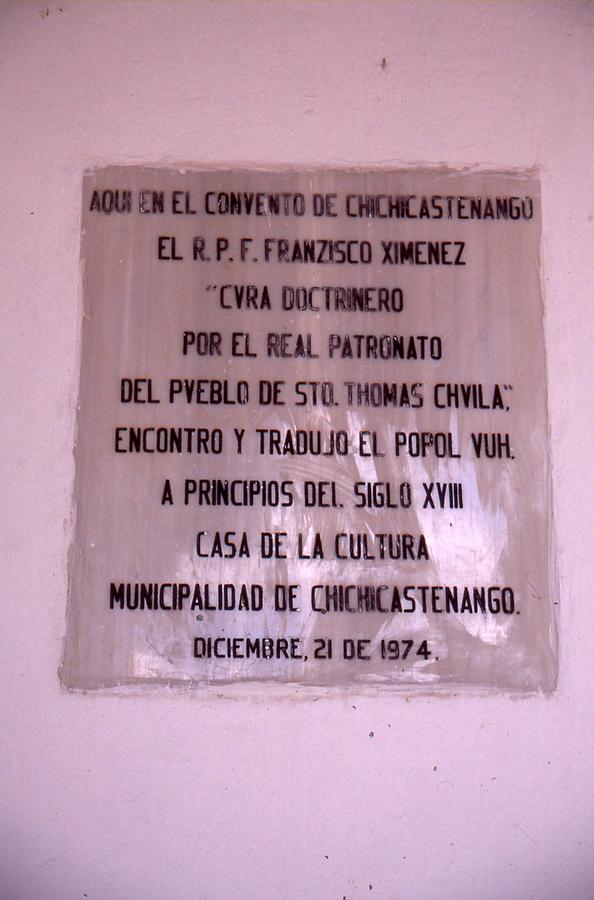Market#

Market, 1989, © Günther Jontes, under CC BY 4.0
The Dominican priest Francisco Ximénez discovered in the place shown the handwritten version of one of the most important books of the old Maya religion, the Popol Vuh ("Book of advice"), in 1702. Despite the fact that the then ruling colonial powers did not allow the use of the old pictograms of the Mayan language, Ximénez copied the book secretly and translated it into Spanish. Popol Vuh is one of the main written sources describing ancient creation myths, the hierachy of gods, all kinds of rituals, and it mentions all then existing tribes of the Mayas before colonisation.
The picture on the left is a reminder of the precious find of Popol Vuh in the former Dominican monastery of Chichicastenango (see next picture).
1702 entdeckte hier der Dominikanerpater Francisco Ximénez eine Handschrift als eines der wichtigsten Bücher der alten Mayareligion im Bereich der Quiché, das Popol Vuh („Buch des Rates“). Obwohl die Kolonialmacht den Gebrauch der alten piktographischen Mayaschrift verboten und die Vernichtung aller Manuskripte angeordnet hatte, kopierte es Ximénez im Geheimen und fertigte eine Übersetzung ins Spanische an. Angefangen von den Schöpfungsmythen über die Darlegung der Götterwelt bis hin zu Anmerkungen zu den kultischen Handlungen und der Geschichte der Stämme ist das Popol Vuh eine der schriftlichen Hauptquellen zur Religion und Geschichte der Maya im vorkolonialen Mittelamerika.
Gedenktafel, die an den Fund des Popol Vuh im ehemaligen Dominikanerkloster von Chichicastenango (nächstes Bild) erinnert.